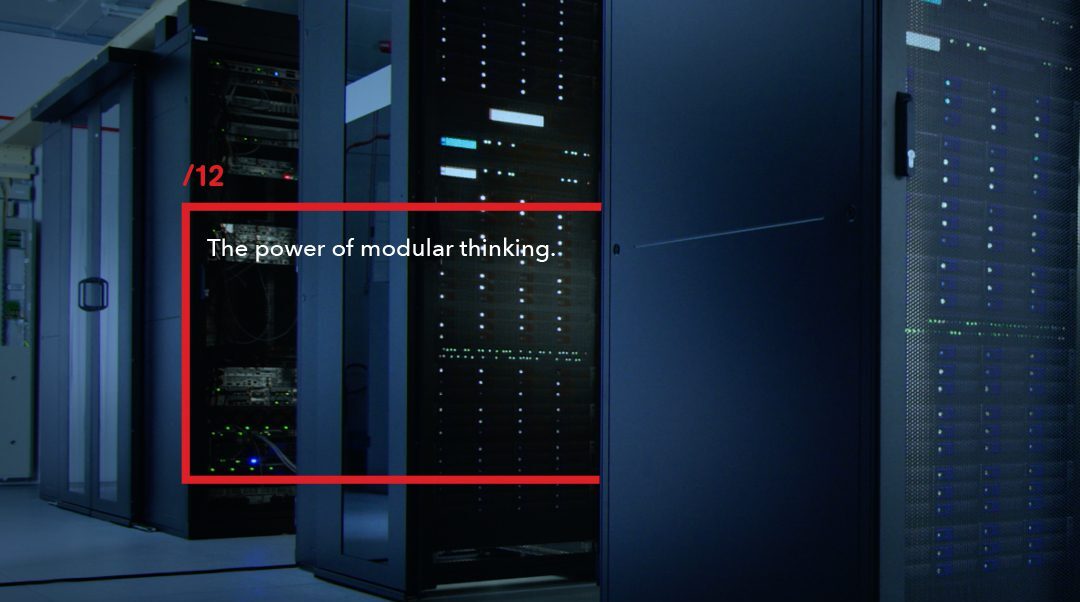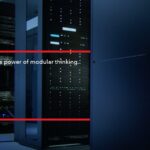5 Crucial Power Distribution Challenges in Data Centers
In a world increasingly driven by data, the smooth operation of data centers is crucial. Yet, data centers face a growing list of challenges related to managing their power needs efficiently. From rising power demands to keeping up with the latest technology, the hurdles are significant.
This blog post dives into these challenges, identifying five key areas data centers must solve to stay competitive in the future. We then explore how the CUBIC Modular System is transforming power distribution in these facilities, turning potential problems into opportunities for greater efficiency and cutting-edge innovation.
Challenge 1: Managing Escalating Global Power Demands
The global demand for computing power is rapidly increasing, driven by the widespread adoption of online services and digital technologies. Data centers face the critical task of dynamically scaling their power distribution systems to meet these evolving demands. But how can data centers efficiently adapt to these increasing requirements in a way that not just meet the immediate demand but also enables easy future upgrades?
Scalability and Versatility
To solve this challenge, the scalability and versatility of a data center’s selected power distribution system is key. Using the CUBIC Modular System offers exactly that and with its modular design, it allows for easy adaptation to changing power requirements, enabling data centers to efficiently expand or modify their power distribution capacity.
The modular approach not only minimizes downtime but also ensures that the system can grow alongside the data center’s evolving needs by adding additional modules. The CUBIC Modular System thus stands as a robust solution, effectively meeting the demands of dynamic power management in data centers today and in the future.
Challenge 2: Achieving Uninterrupted Operational Reliability
In today’s digital era, uninterrupted access to data center services is not just expected; it’s essential for the efficiency of businesses and individuals globally. Thus, operational reliability has become essential in data center operations where continuous, uninterrupted operation is critical to prevent financial losses and reputational harm. But how can data centers ensure consistent reliability amidst various operational challenges?
Enhanced Reliability through Comprehensive Testing and Withdrawable Solutions
For data centers, taking chances on operational reliability is not an option. A proven reliable power distribution system is a must, and so is a backup plan for component failure. Rigorously tested by independent laboratories, the CUBIC Modular System is proven to meet the highest safety and reliability standards. The comprehensive testing reduces operational risks and ensures a consistent power supply, vital for maintaining 24/7 data center operations.
Configuring the switchboard with the CUBIC Multi Drawer system further bolsters this reliability. Its fully withdrawable design allows for quick and safe replacement or maintenance of electrical components without disrupting the main power supply, significantly reducing downtime, and enhancing operational continuity in critical situations.
Read more about Multi Drawer and other configuration options in the CUBIC Modular System.
Challenge 3: Optimizing Space Utilization
In the world of data center operations, utilizing space effectively is a critical challenge. As these facilities expand their capacity to handle increasing data loads, finding ways to maximize available space becomes essential. Traditional power systems can be bulky and inefficient in terms of space usage, posing a significant obstacle in environments where every square meter is valuable. How can data centers optimize their space, particularly when expanding or upgrading their power distribution infrastructure?
Modularity, Configuration, and Testing for a Verified Compact Switchboard Design
The key to utilizing space in data center power distribution lies in the compactness of the switchboard. Designed with space efficiency in mind, the CUBIC Modular System allows for the construction of extremely compact switchboards. Due to the modular nature, the various configuration options, and the comprehensive testing that allows easy design verification, the CUBIC Modular System enables data centers to tailor their power distribution setups to fit specific requirements in a cost-effective way without compromising on functionality, capacity, and safety.
This compact design is particularly beneficial in high-density data environments, where maximizing space utility is crucial. With the CUBIC Modular System, data centers can effectively utilize their available space, ensuring that power distribution infrastructure does not become a limiting factor in their operational expansion and efficiency.

Challenge 4: Integrating Emerging Technologies
As the technological landscape continues to evolve at an unprecedented pace, data centers are under increasing pressure to stay current. The challenge lies in ensuring that power distribution systems are not only compatible with today’s technologies but also adaptable to future innovations. This adaptability is key to maintaining a competitive edge. How can data centers ensure their infrastructure is flexible enough to integrate emerging technologies without undergoing constant overhauls?
Future-Ready Design and Independent Component Selection
Adaptability is crucial for data centers to maintain operational efficiency and a technological edge in an evolving digital world. The CUBIC Modular System’s modular structure allows for easy updates and expansions, accommodating technological advancements without the need for complete system replacements.
Moreover, using the CUBIC Modular System enable data centers to independently choose tested and verifiable electrical components from a wide range of leading manufacturers. By implementing the CUBIC Modular System, data centers therefore position themselves to not only meet current technological demands but also readily adapt to future innovations, securing their role as advanced, technology-ready facilities.
Challenge 5: Balancing Cost-Effectiveness in Power Distribution
With budget constraints increasingly at the forefront, data centers are tasked with finding power distribution solutions that are not only efficient but also cost-effective. As they scale to meet growing digital demands, the challenge is to manage expenses without compromising on operational quality. How can data centers optimize their power distribution investments to ensure competitiveness and long-term financial sustainability?
Long-Term Cost-Effective Power Distribution Solutions
The key to achieving cost-effectiveness in power distribution lies in adopting systems that offer long-term value. The CUBIC Modular System exemplifies this by combining scalability, reliability, and adaptability, translating into tangible cost savings. Its modular design allows data centers to invest based on current needs while providing easy expansion options for the future and thereby avoiding overinvestment.
Additionally, configuration options like the CUBIC Multi Drawer and the ability to quickly build compact and verified designs enhance operational reliability and space efficiency, further contributing to cost savings. These aspects, combined with the system’s readiness to integrate future technologies, ensure that the initial investment remains relevant and valuable in the evolving tech landscape. Thus, the CUBIC Modular System emerges as a financially excellent choice for data centers looking to balance technical excellence with cost efficiency.
In Conclusion
The CUBIC Modular System addresses a wide range of challenges in data center power distribution with solutions that are versatile, reliable, compact, cost-efficient, and future-ready. By adopting these solutions, data centers can effectively meet current demands and prepare for future challenges, securing their success and resilience in the digital era.
Discover the full capabilities of our compact and scalable solutions.
Find more details on the unique abilities of the CUBIC Modular System here.




